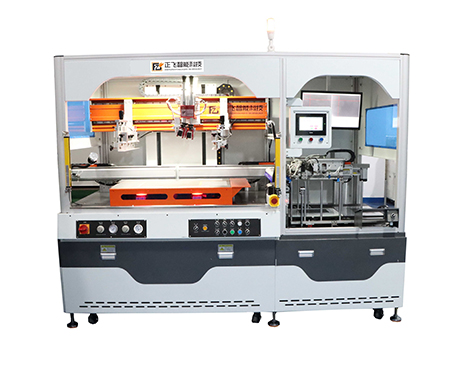
In the printing process of automatic screen printing machines, a series of comprehensive measures need to be taken to ensure the stability and consistency of printing quality. The following are detailed explanations of several key aspects:
1. Equipment parameters and settings
Firstly, setting and adjusting the various parameters of the printing machine correctly is the foundation. This includes printing speed, printing pressure, height of the print head, and distance from the board. Fine tune these parameters according to different printing materials and pattern requirements to achieve the best printing effect. For example, appropriate printing speed helps maintain ink uniformity and resolution, while appropriate printing pressure ensures that ink is evenly distributed on the substrate, avoiding problems such as unclear patterns or uneven colors.
2. Material and Ink Selection
Choosing high-quality screen and suitable ink is crucial for improving printing quality. The selection of screen should be determined based on the printing material and pattern requirements to ensure that ink can pass smoothly and be transferred onto the material. At the same time, the selection of ink also needs to consider its color, viscosity, drying speed, and other characteristics to ensure that the printed patterns are brightly colored, full, and long-lasting.

3. Accurate registration and alignment
Accurate registration and alignment are key to ensuring the accuracy of pattern positioning and overlapping areas. Use appropriate fixtures and calibration tools to ensure accurate alignment between the screen and the printed material, thereby avoiding issues of pattern deviation or overlap. This is particularly important for multi-color printing that requires high-precision alignment.
4. Quality Control and Inspection
Strict quality control and inspection during the printing process are indispensable. By monitoring key indicators such as color accuracy, clarity, and uniformity of printed materials in real-time, problems can be identified and resolved in a timely manner, ensuring that each batch of products meets quality requirements.
5. Regular cleaning and maintenance
Keeping the screen printing machine clean and well maintained is crucial for maintaining the stability of printing quality. Regularly cleaning the printing head, ink tank, screen and other components to prevent blockages and the formation of deposits helps ensure smooth ink transfer and stable printing effects. At the same time, regular calibration and maintenance of the equipment can ensure the accuracy and stability of each component, thereby further improving the printing quality.
6. Operator training and skill enhancement
The professional knowledge and skill level of operators also have a significant impact on printing quality. By providing appropriate training and operating procedures, ensure that operators are familiar with the use and precautions of the screen printing machine, and can maximize the performance of the equipment while ensuring printing quality. In addition, with the continuous advancement of technology, operators also need to constantly learn and master new technologies and knowledge to adapt to the constantly changing demands of the printing market.
In summary, automatic screen printing machines can ensure the stability and consistency of printing quality through precise setting of equipment parameters, selection of high-quality materials and inks, ensuring accurate registration and alignment, strict quality control and inspection, regular cleaning and maintenance, and improving operator skills during the printing process.